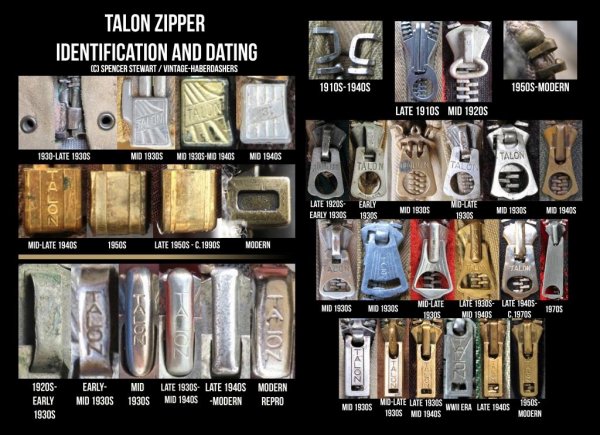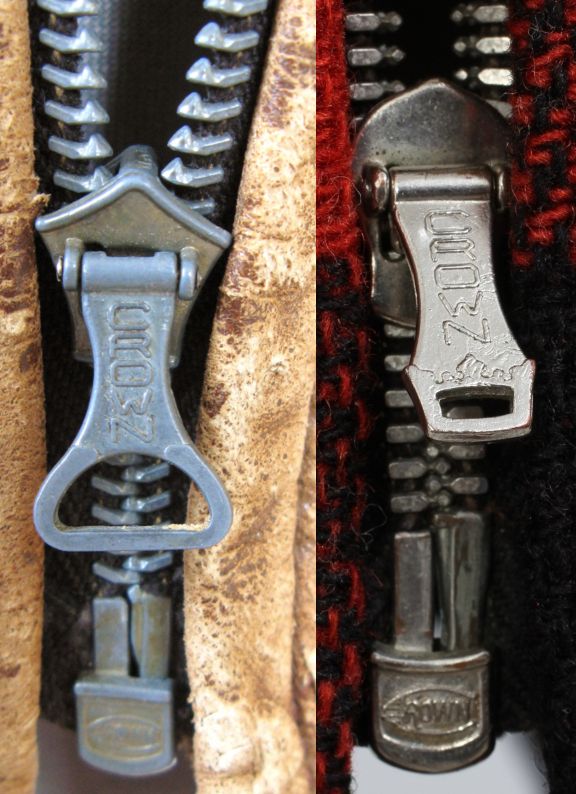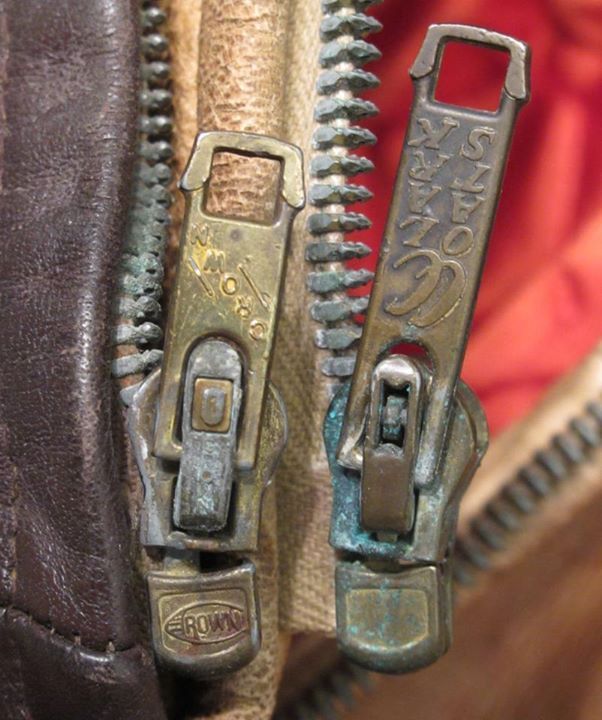- Messages
- 10,562
- Location
- Bozeman, MT
Hardware like zippers can be incredibly useful when it comes to dating vintage clothes, especially when other means of identification (union tags, makers tags) are not present. During the "golden era", Talon was America's largest zipper company. Their constant refinement of their design allows for garments with specific variants to be placed within a chronology.
A variety of components comprise a single zipper. Each component had a number of different versions, some of which may come down to the specific machine it was stamped with. That is to say, a particular component may have a slightly different design or font from another, even if they were made on the same day. With something so small, it's easy to get bogged down in minutia, difficult to compile all the variants, and even harder to be completely precise. Design changes were not made all at once- components were used up until they were gone. As such, you will run across "transitional" versions of all these zipper designs - older components mixed with newer ones. When using hardware as a dating method, you should consider the possibility of replacement. As with any other dating "clue", zipper design should not be the end of assigning a date to a garment. For any kind of accuracy, it should be combined with a variety of other methods.
To illustrate the kind of minutia I'm talking about, here are a variety of designs of the component which attaches the puller to the slider. As a general rule, this part was marked "Talon" in the mid 1930s through to the mid 1940s, after which point it was simplified to a blank design. Even with this as a guideline, consider the wide (and and almost definitely incomplete) variety of stampings below.

Terry posted the image of these zipper pulls and sliders in another thread in Outerwear, and I thought it would be useful to include them here. Some are in Dinerman's guide, but others are not. According to Terry, they all date to the 1930s.

A variety of components comprise a single zipper. Each component had a number of different versions, some of which may come down to the specific machine it was stamped with. That is to say, a particular component may have a slightly different design or font from another, even if they were made on the same day. With something so small, it's easy to get bogged down in minutia, difficult to compile all the variants, and even harder to be completely precise. Design changes were not made all at once- components were used up until they were gone. As such, you will run across "transitional" versions of all these zipper designs - older components mixed with newer ones. When using hardware as a dating method, you should consider the possibility of replacement. As with any other dating "clue", zipper design should not be the end of assigning a date to a garment. For any kind of accuracy, it should be combined with a variety of other methods.
To illustrate the kind of minutia I'm talking about, here are a variety of designs of the component which attaches the puller to the slider. As a general rule, this part was marked "Talon" in the mid 1930s through to the mid 1940s, after which point it was simplified to a blank design. Even with this as a guideline, consider the wide (and and almost definitely incomplete) variety of stampings below.
Terry posted the image of these zipper pulls and sliders in another thread in Outerwear, and I thought it would be useful to include them here. Some are in Dinerman's guide, but others are not. According to Terry, they all date to the 1930s.
Attachments
Last edited by a moderator:








